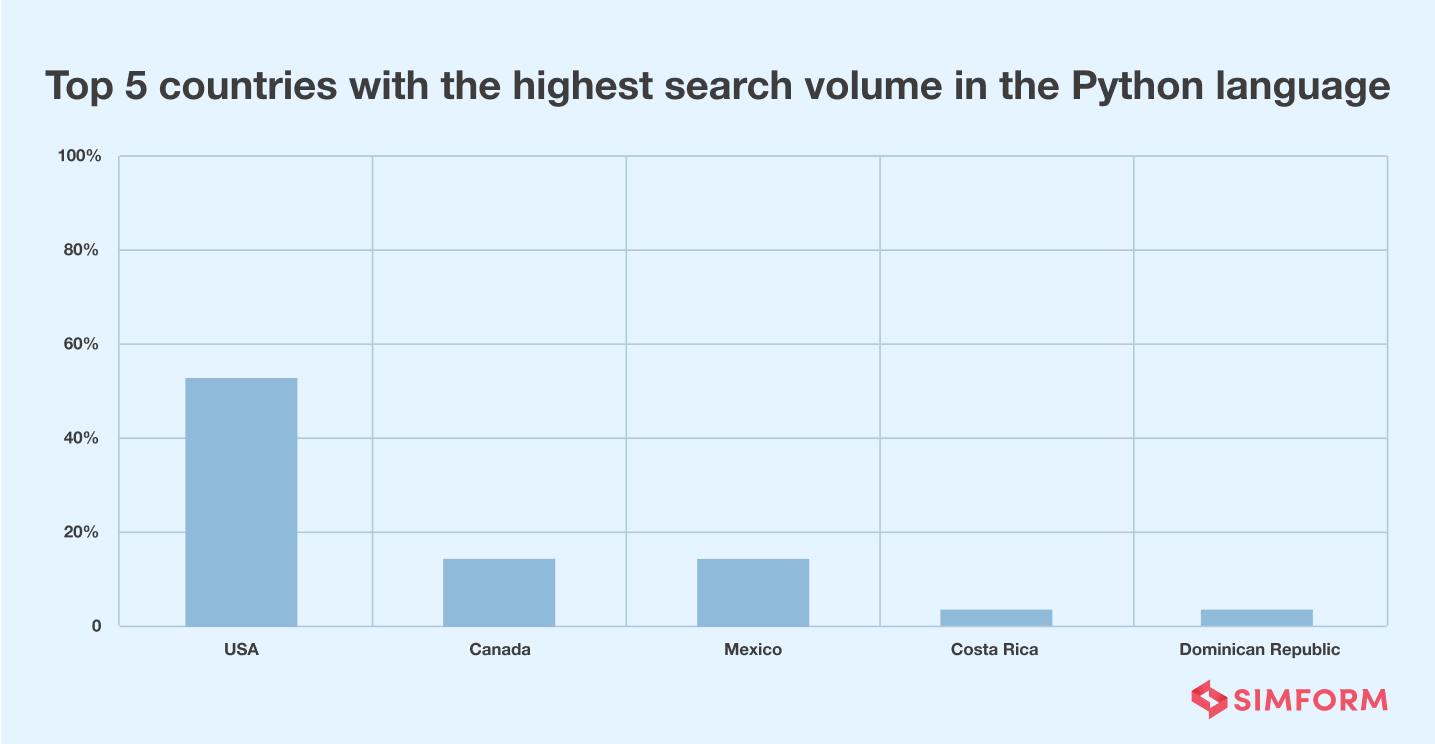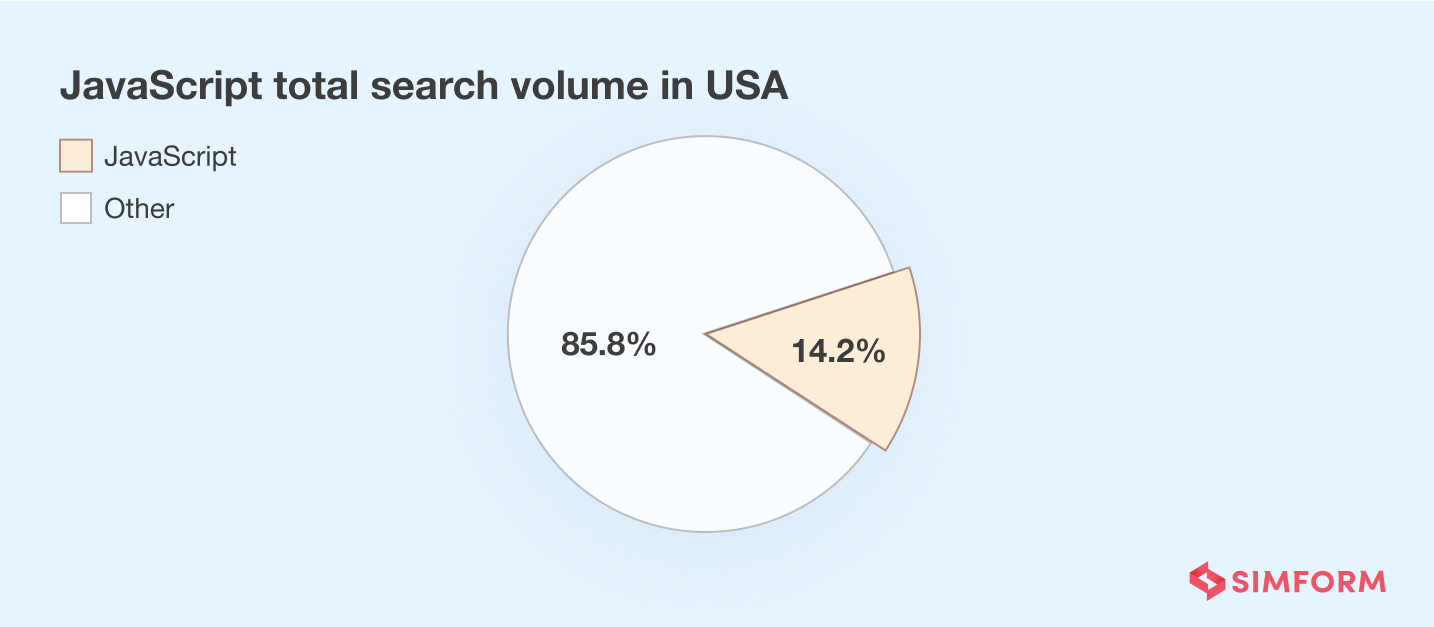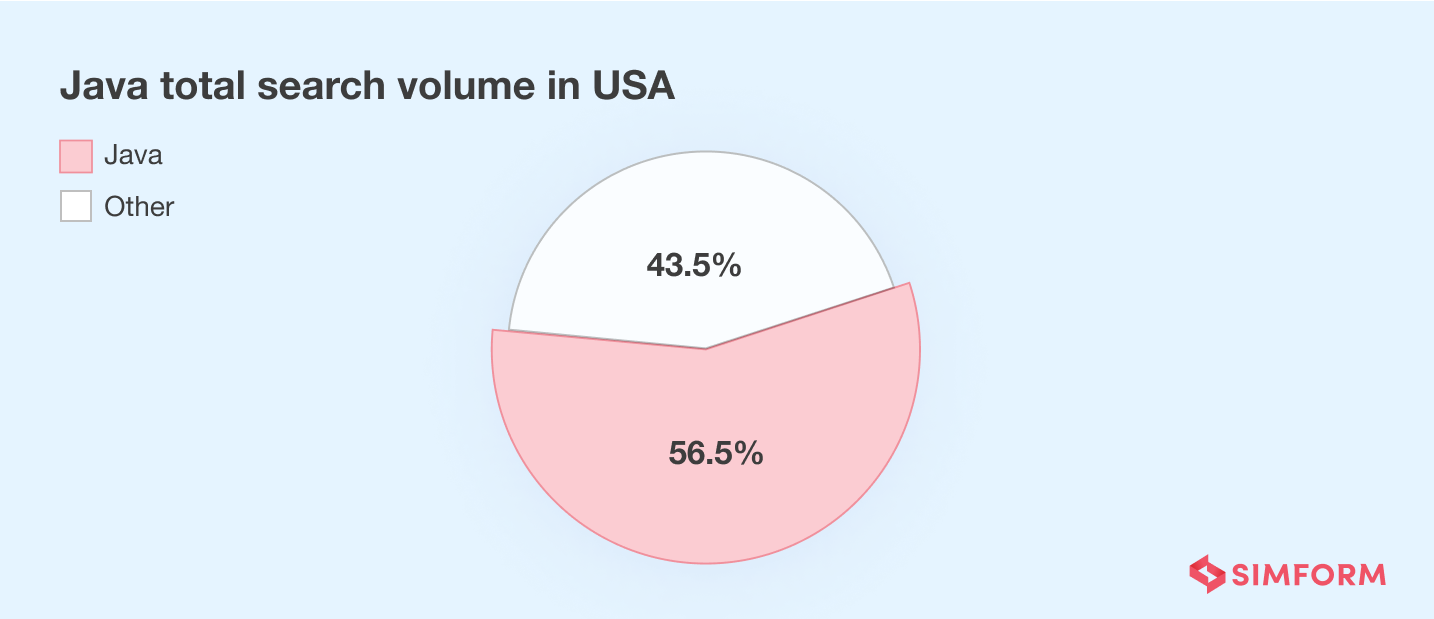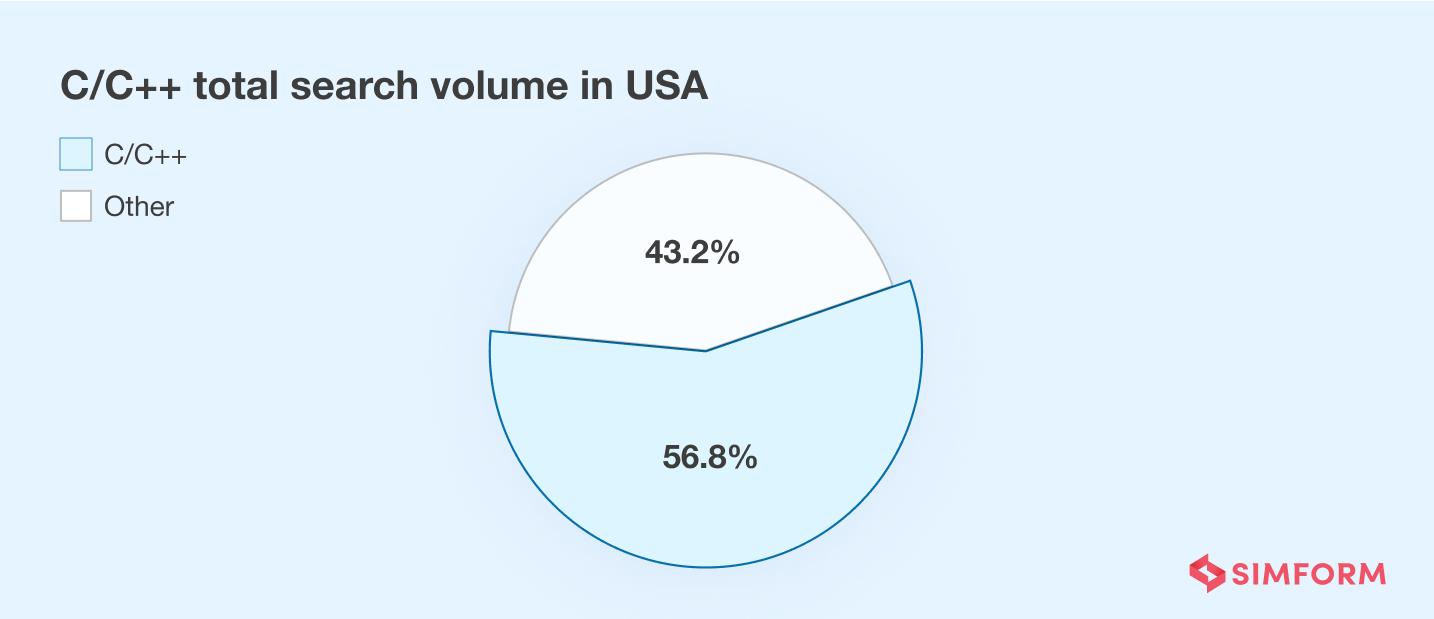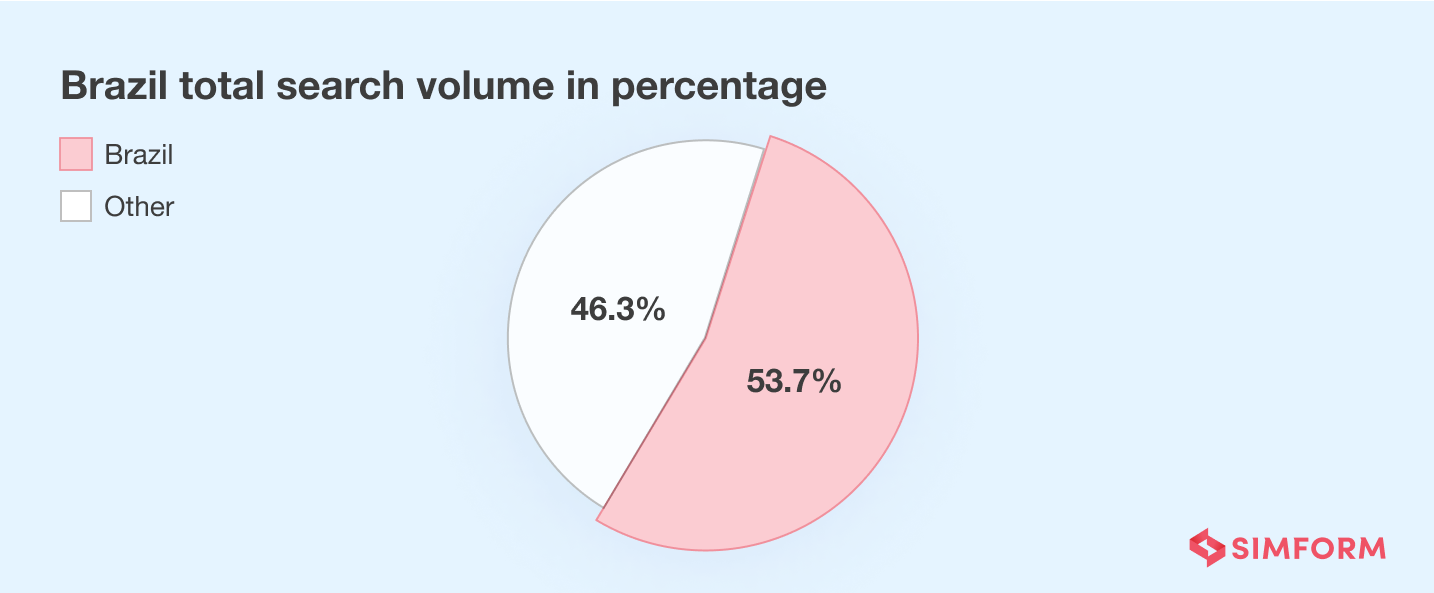With constant changes in the software development trends, the popularity of programming languages also undergoes significant changes. Keeping this in mind, we undertook an in-depth analysis of key technologies (consisting of 24 technologies in total) with users in 162 countries worldwide to provide a definitive source of information for the developer fraternity. By employing extensive findings from Google Search, we have compiled this report that highlights the most used programming language in 2023. Let’s check it out.
Key takeaways:
1. Java tops the list of most googled technologies. It includes 22.4% of the total search results and appears in 1 in every 5 searches. It is followed by Python and Javascript with 21.01% and 14.27% respectively.
2. Java tops the list of most googled technologies in 80 out of 162 countries worldwide and has a market share of over 50% in these countries.
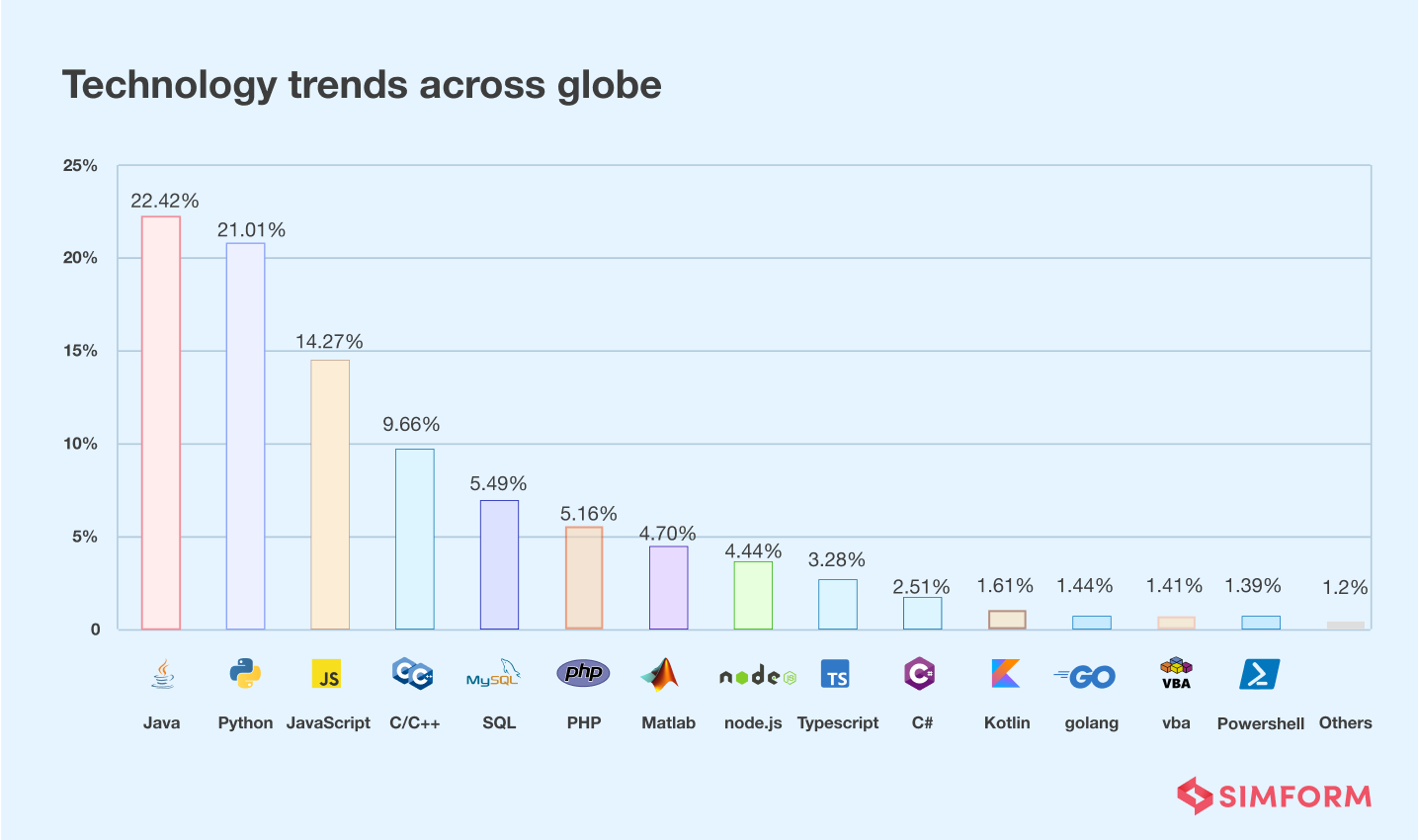
3. Over 65% of the total searches in ‘the most googled technology’ category consist of Java, Python, and Javascript. On the other hand, Bash language is the least Googled technology with only 3650 average monthly searches globally.
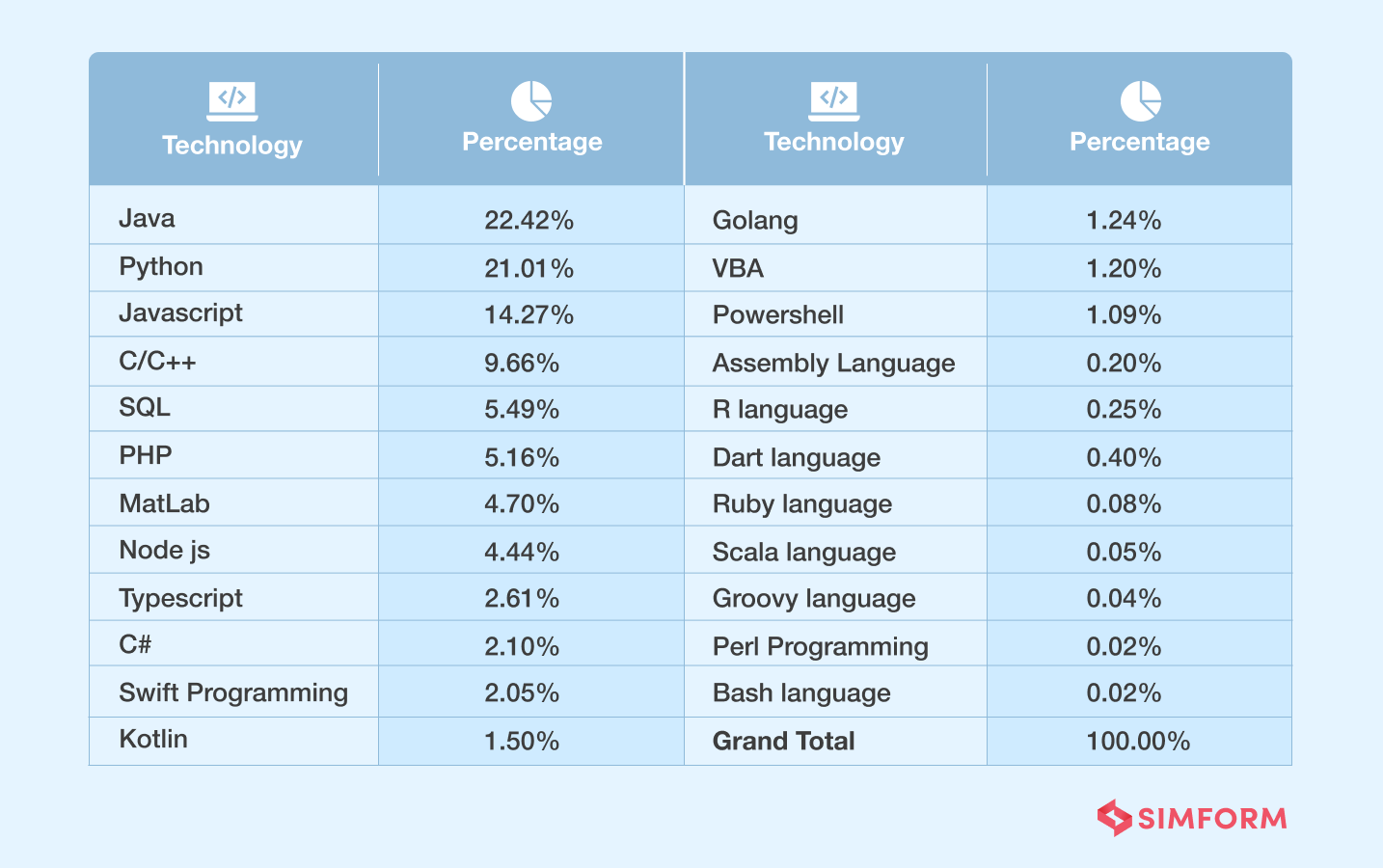
To make it easier for the readers to refer to these statistics of programming languages, we are adding this world map highlighting the most popular programming language/s in each of the 162 countries. For a detailed overview of popular languages in every continent, refer to the following sections.
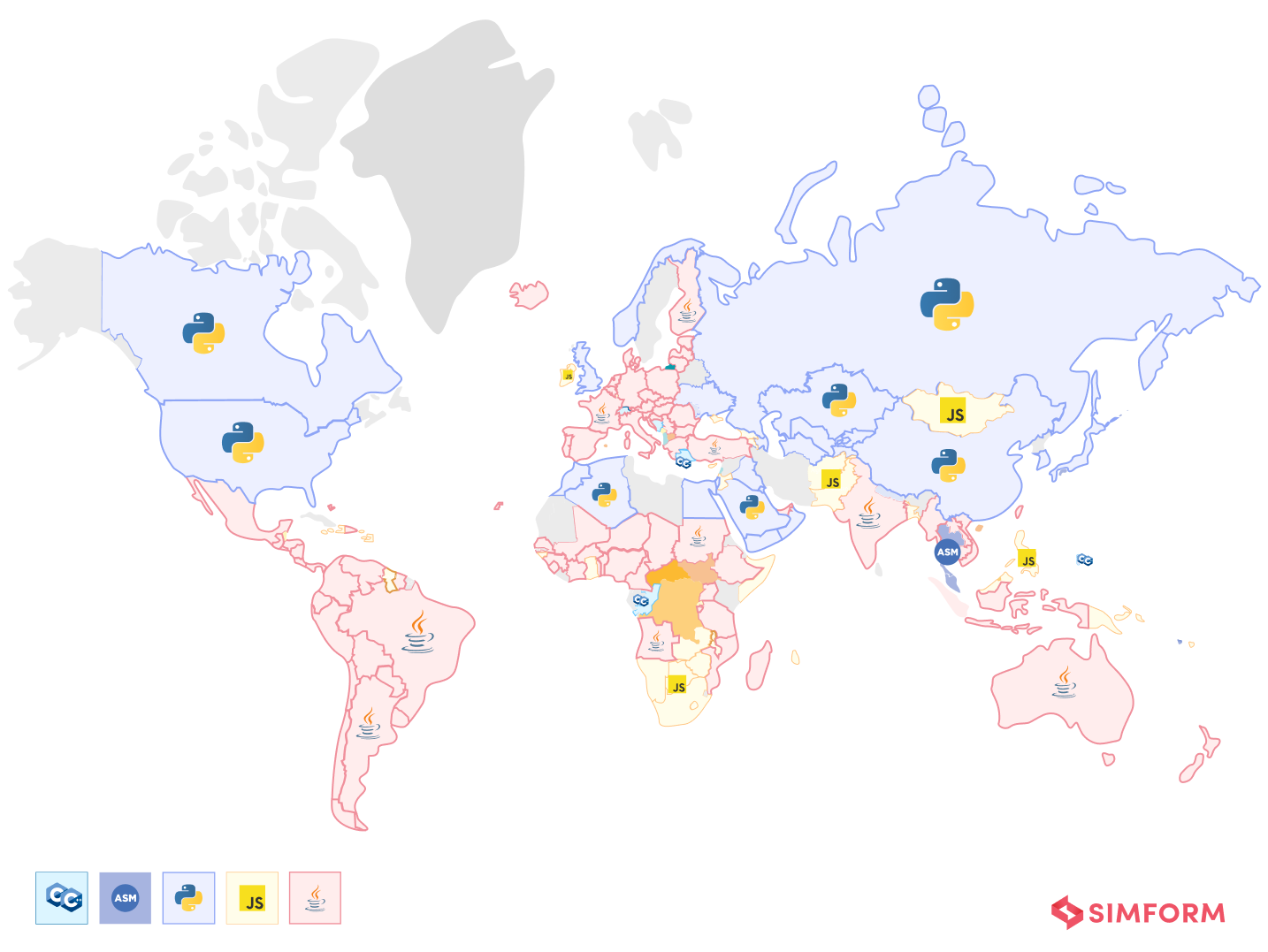
Top Googled technology among continents-
1. Python dominates the list of most searched languages in North America and Asia and takes up 20% and 22% shares respectively of the total searches.
2. Java takes the first position in the most searched languages list in Australia, Africa, South America, and Europe.
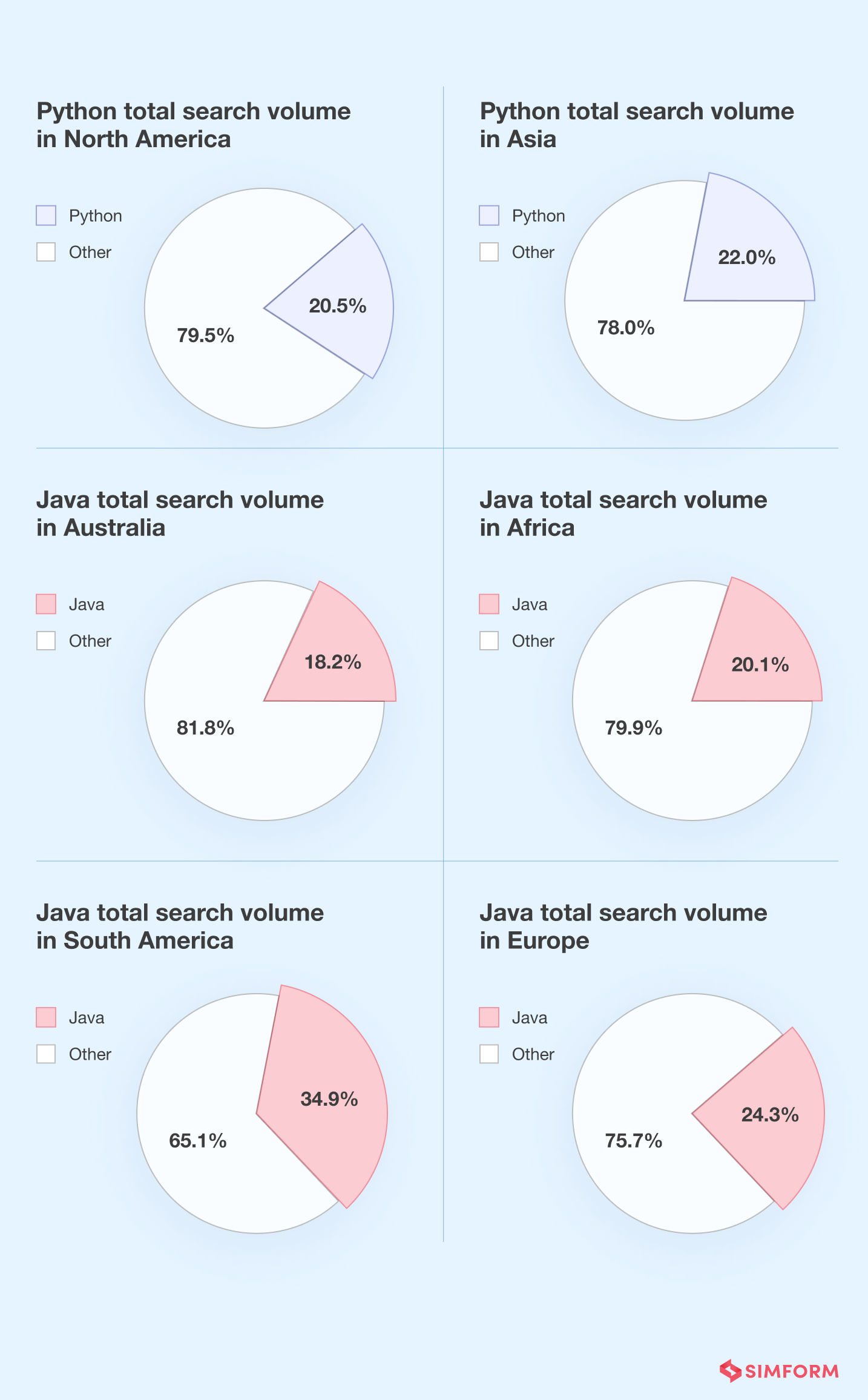
Python becomes the ‘go-to language’ for North America
Developers in Asia choose Python to be their preferred language
Python is the most popular language across Asian countries and includes 22.03% of the total number of searches.
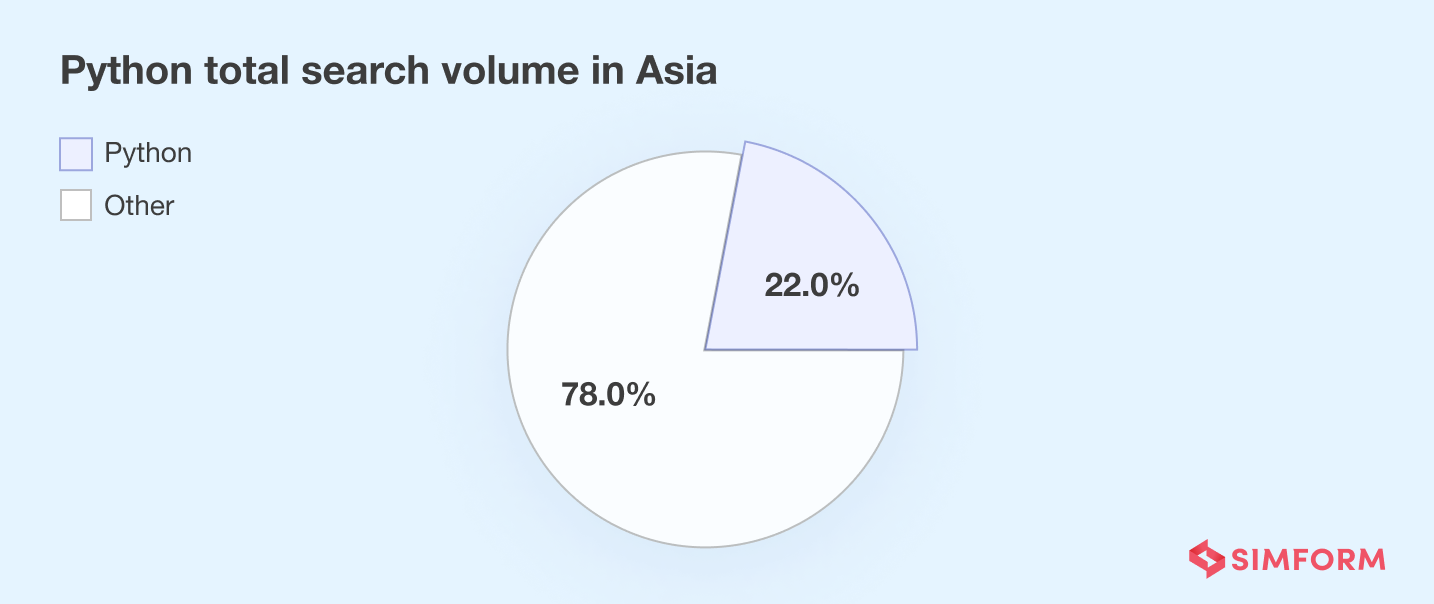
1. Javascript has become the third most popular language in Asia taking 15% of the total search volume for all programming languages.
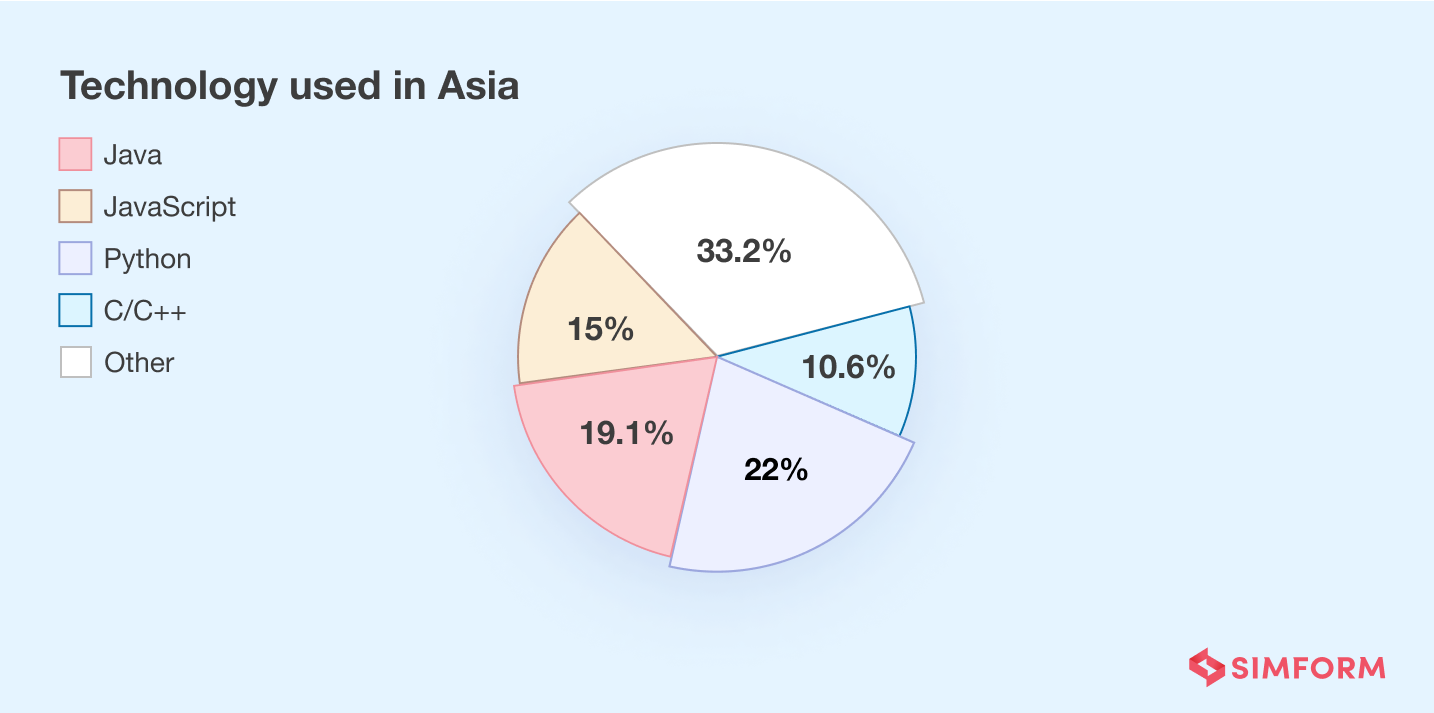
2. With 35% of the total searches for Python, India has the highest number of searches for Python in Asia.
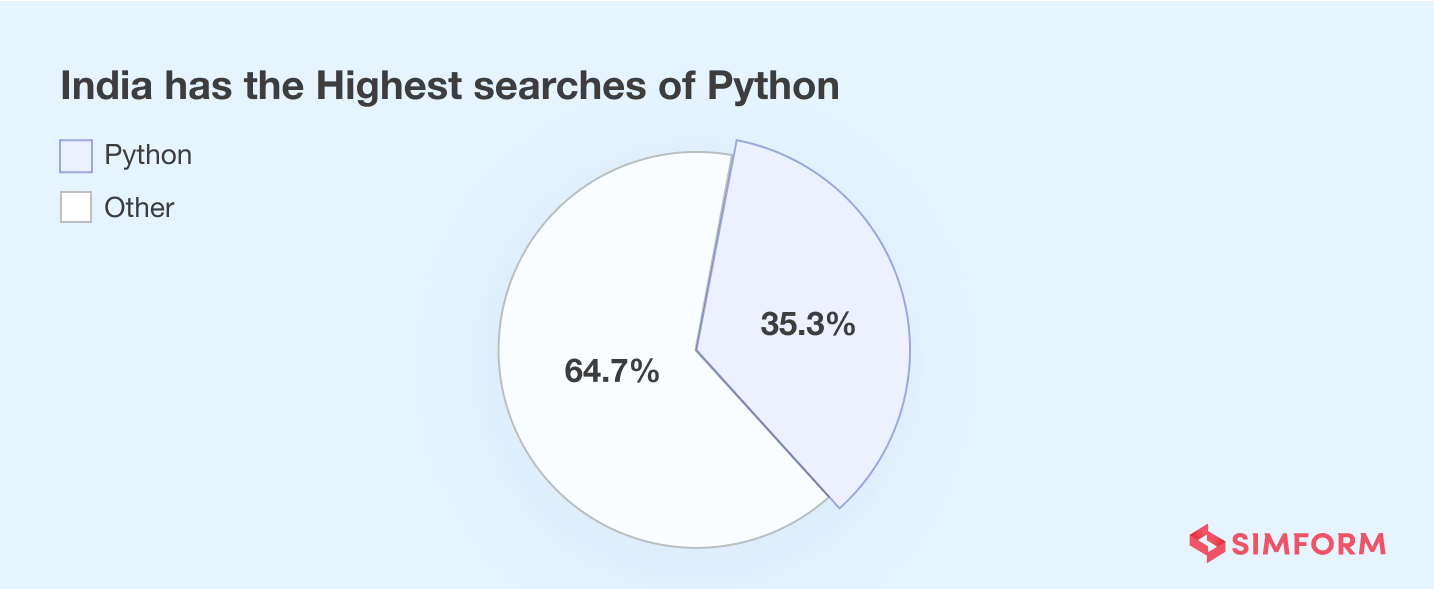
3. Python and Typescript enjoy equal popularity (21%) among all the programming languages in Singapore.
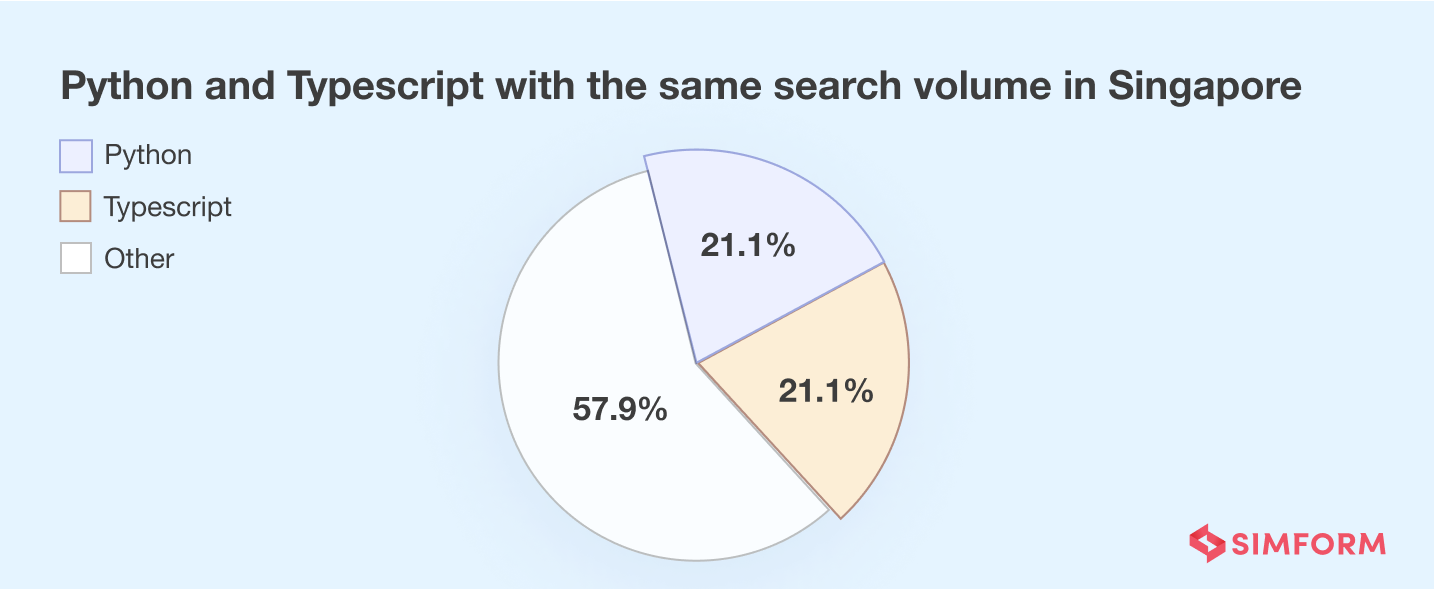
4. The Philippines has a higher search volume for C/C++ than South Korea and Japan combined.
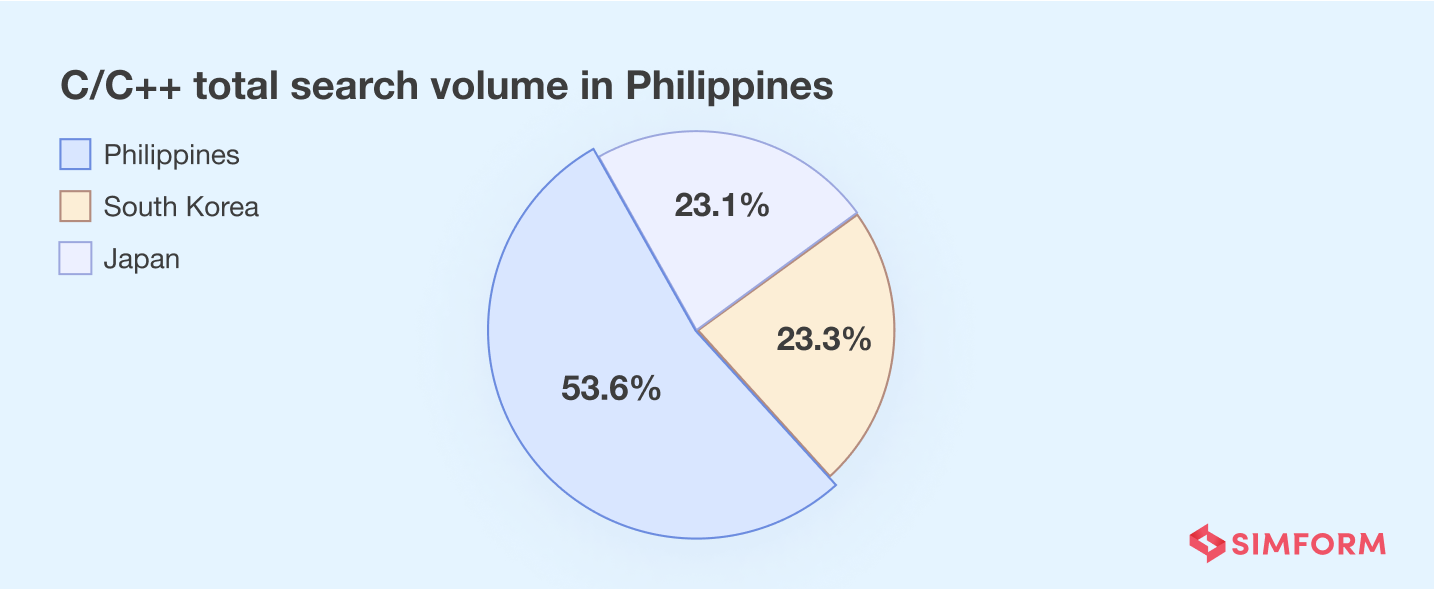
Java continues to be one of the leading programming languages in South Africa
Nigeria leads the way with over 15% of the total search volume for Java in Africa.
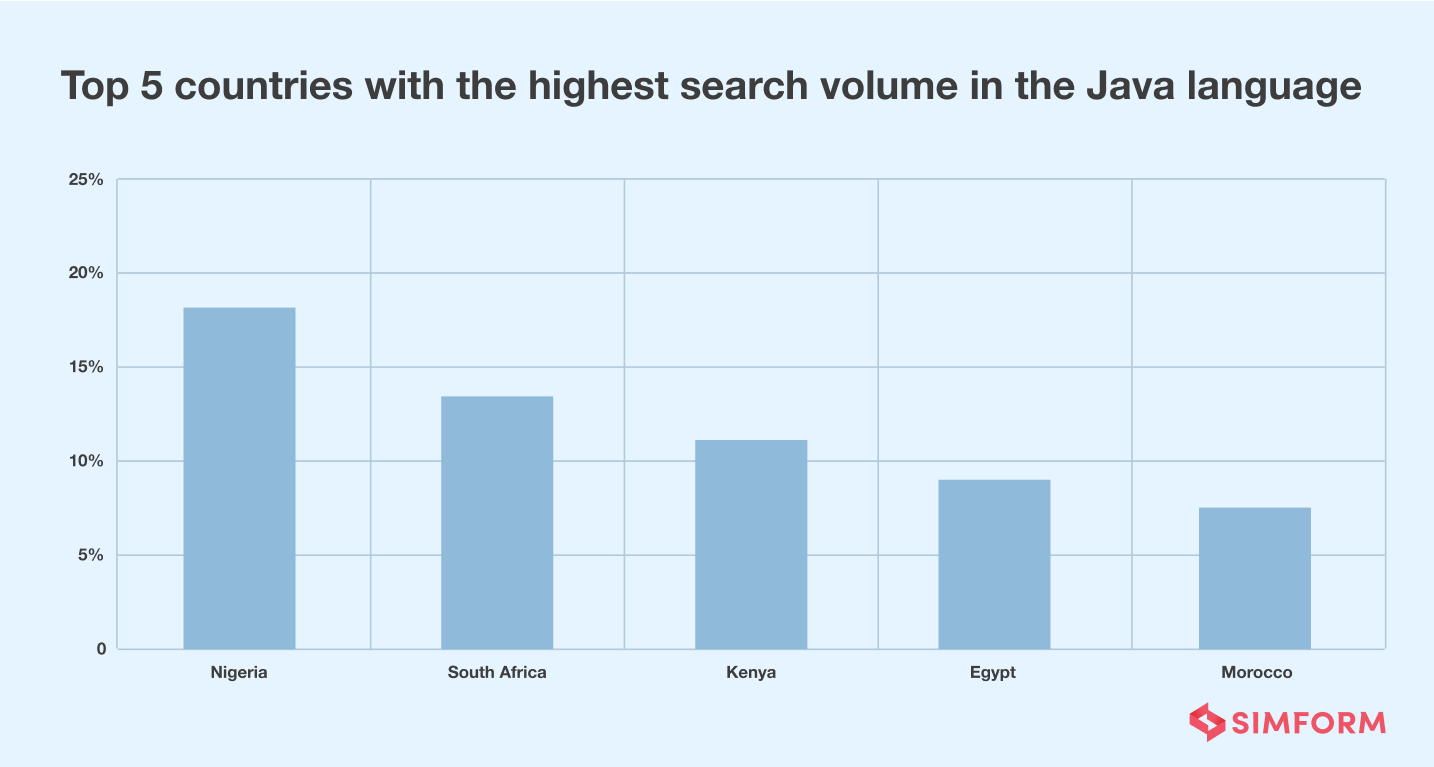
1. Java is the most popular language and appears in every 1 in 5 searches (20.03%) across African countries.
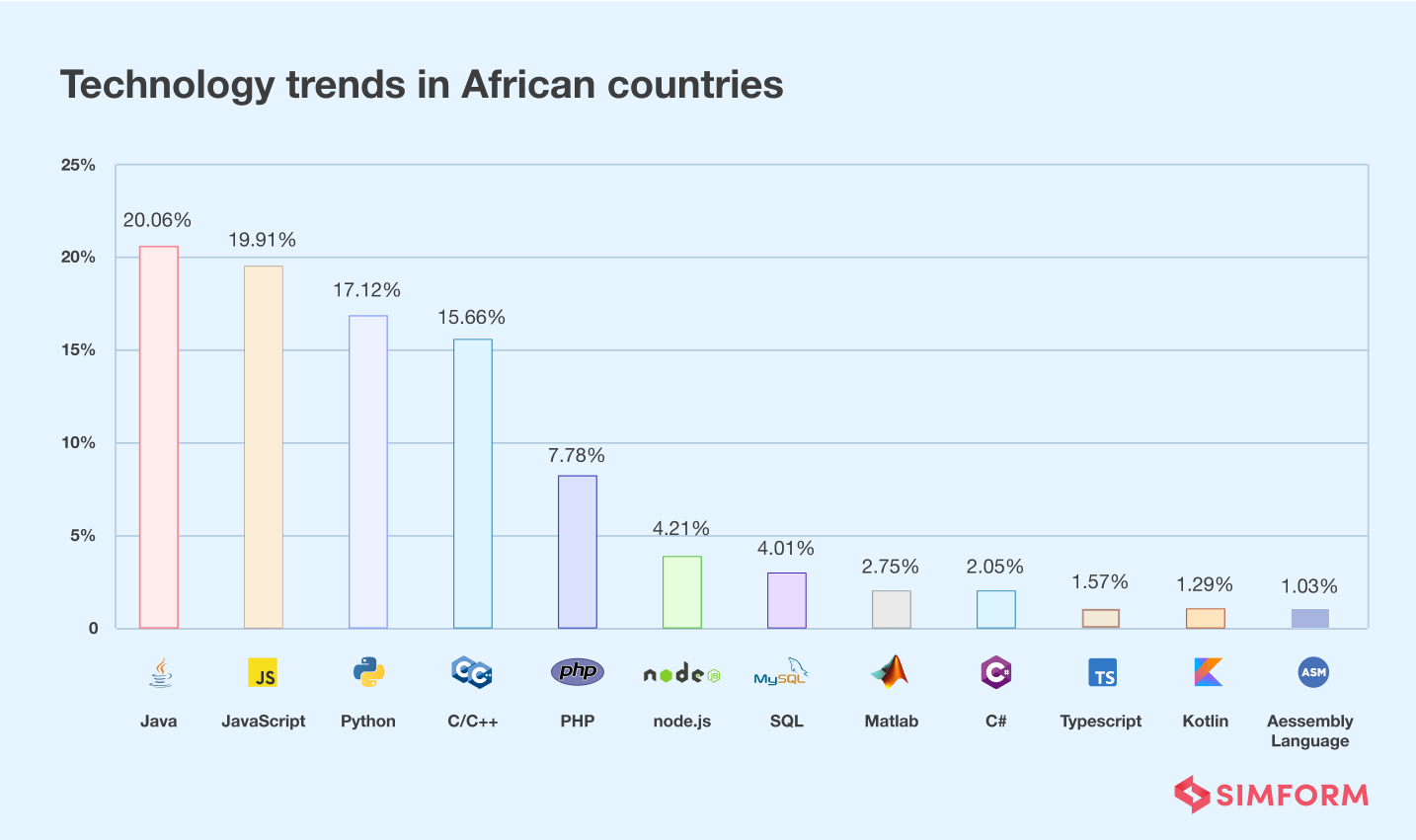
Uber and Airbnb are among the 10100 companies reported to include Java in their tech stacks.
South America chooses Java over other programming languages
Brazil tops the list of South American countries in Google searches for Java.
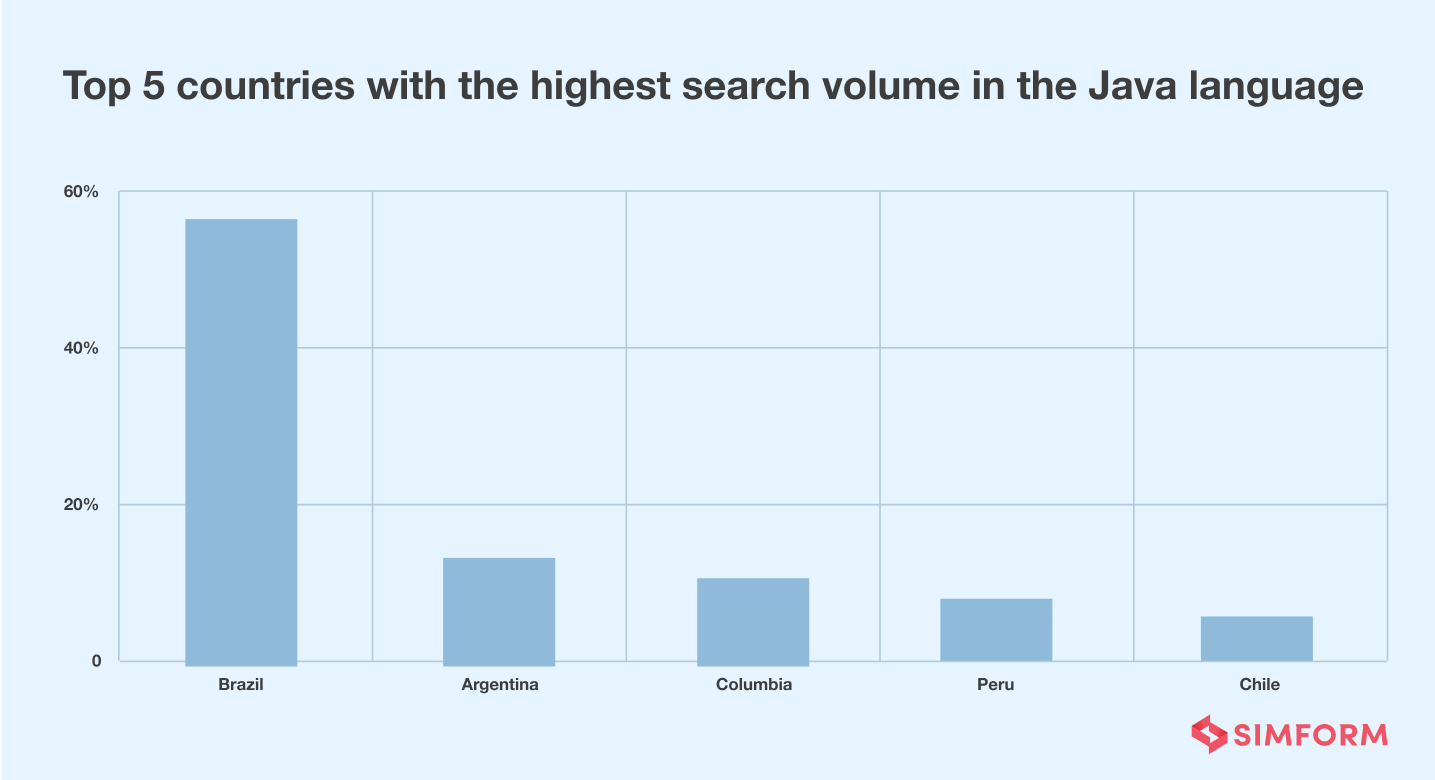
1. The total number of searches for all programming languages in Brazil exceeds the sum of searches of the entire continent of South America.
Instagram and Slack reportedly include Javascript in their tech stacks.
Python and Java are the most used programming language in Europe
Poland maintains the highest search volume for Java among European countries.
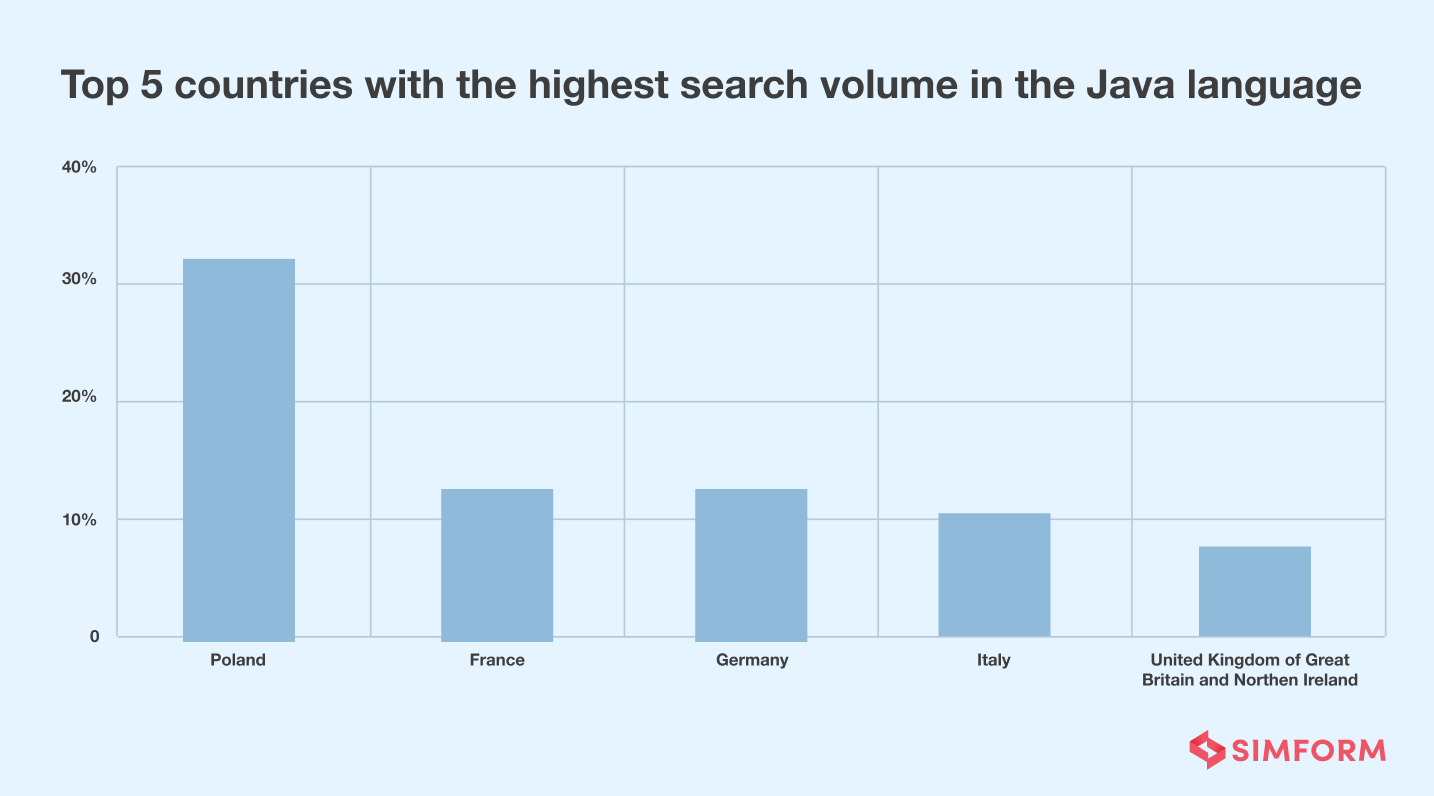
1. Every 1 in 10 searches for C/C++ appears in Europe.
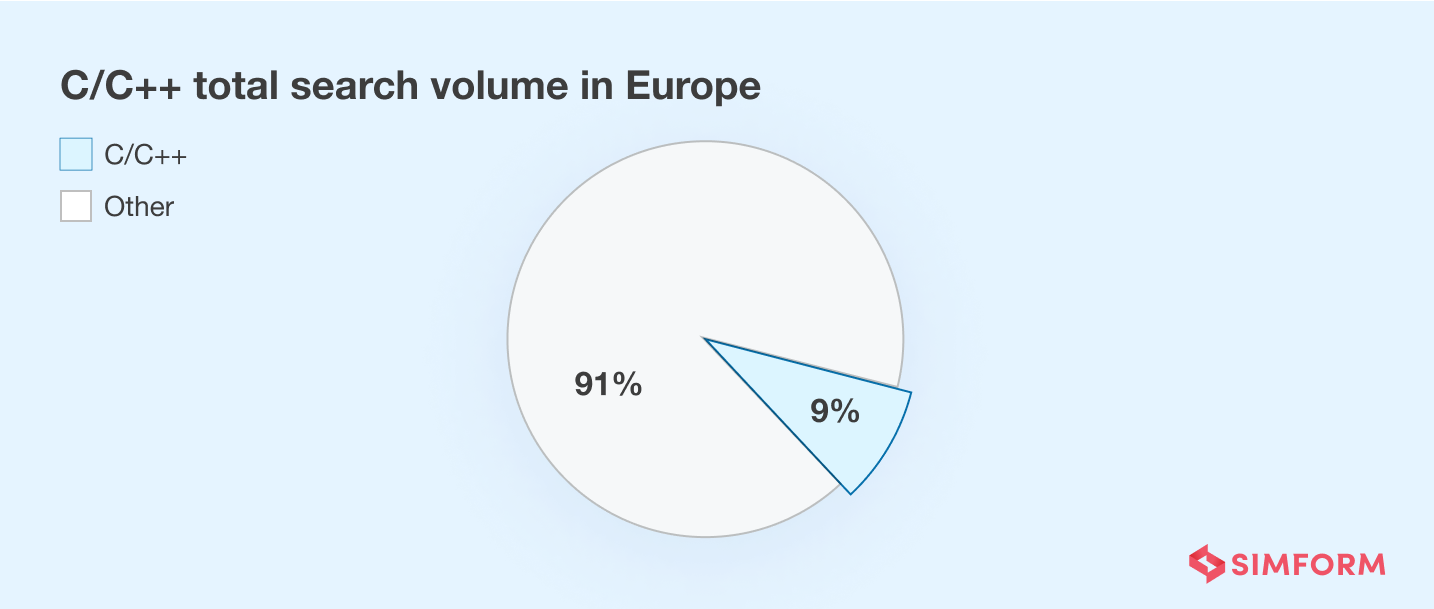
2. 11 out of 44 countries in Europe hold the same search volume for Python and Java.
3. Poland features the highest number of SQL searches in Europe in comparison to all the countries.
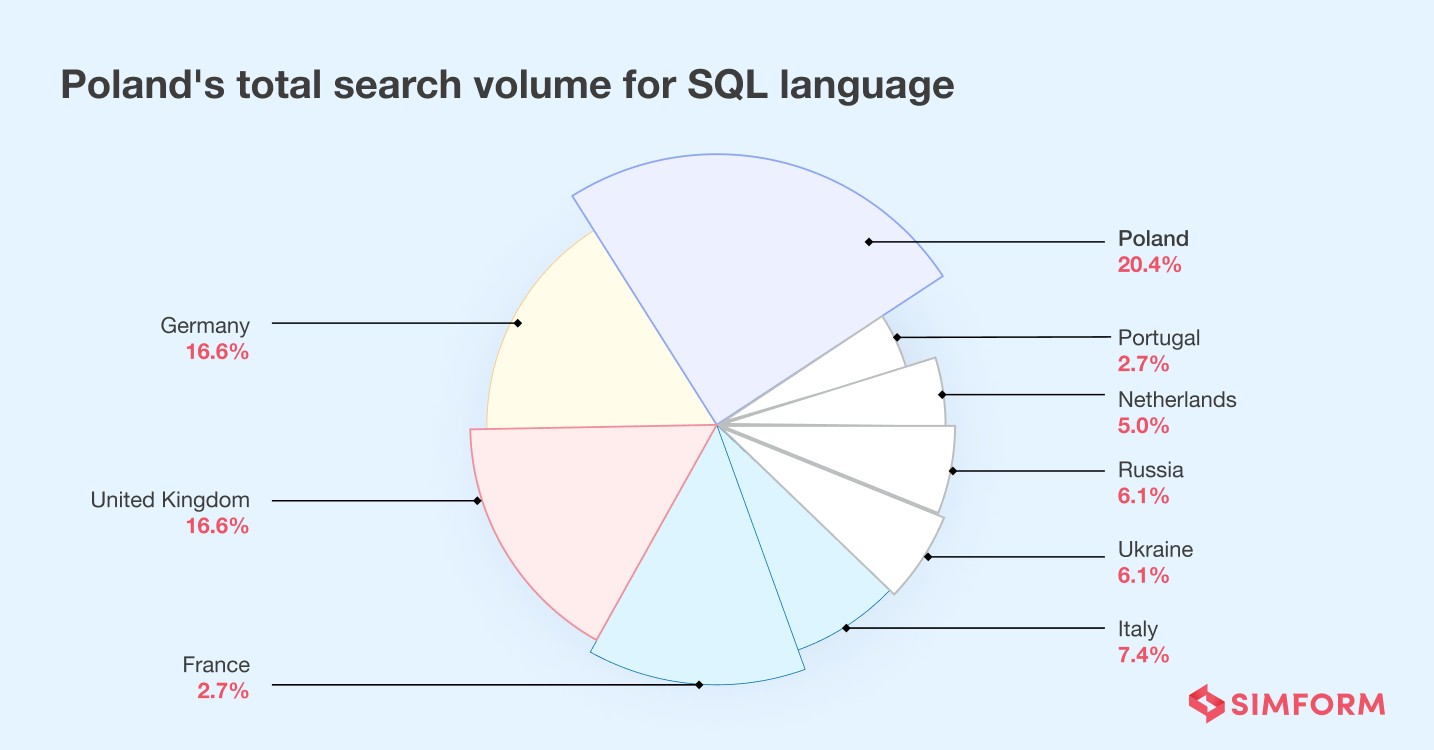
4. Similarly, Poland contributes to half of all the Java searches in Europe.
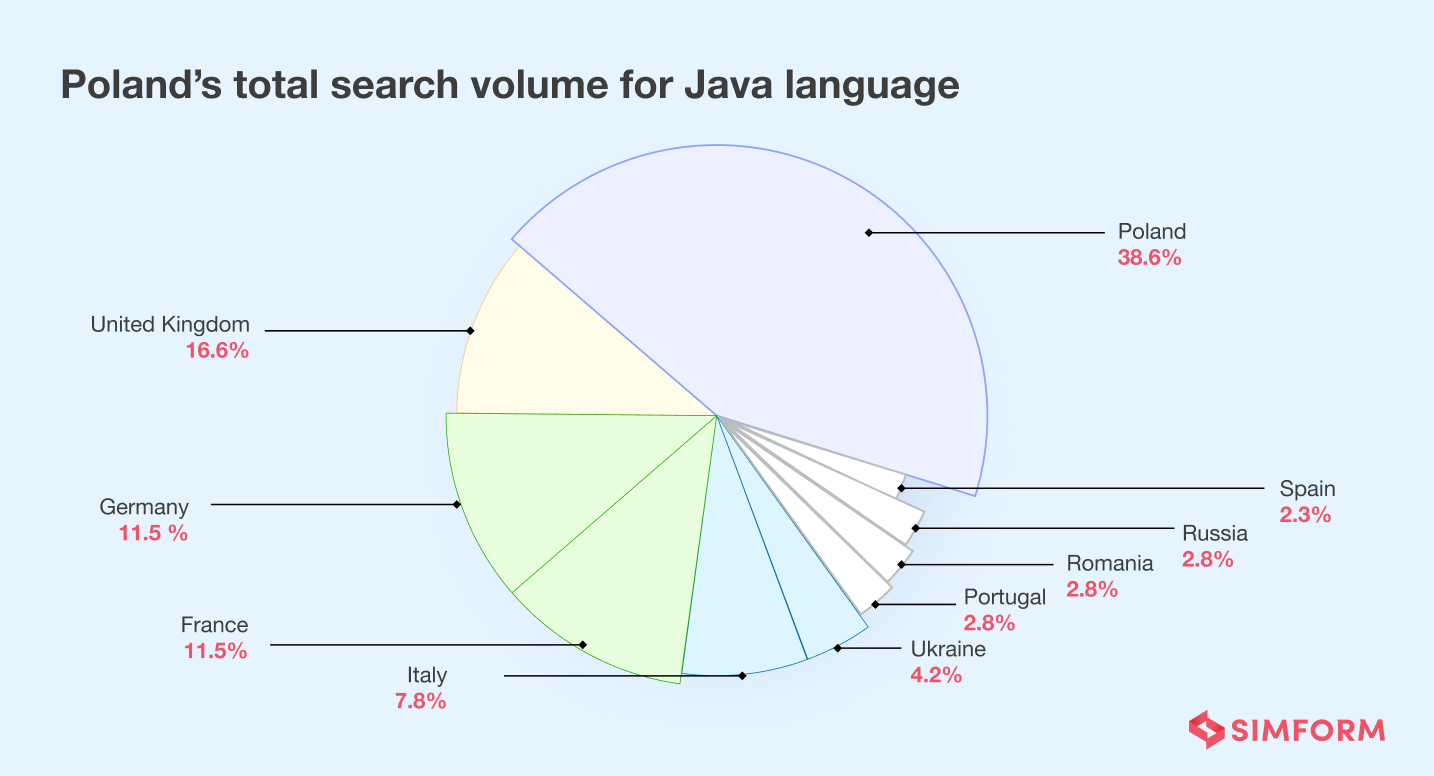
The Australian developer community makes Java its first-choice
Similar to Europe, Java and Python are preferred languages for countries in the Australian continent with Australia leading in Java.
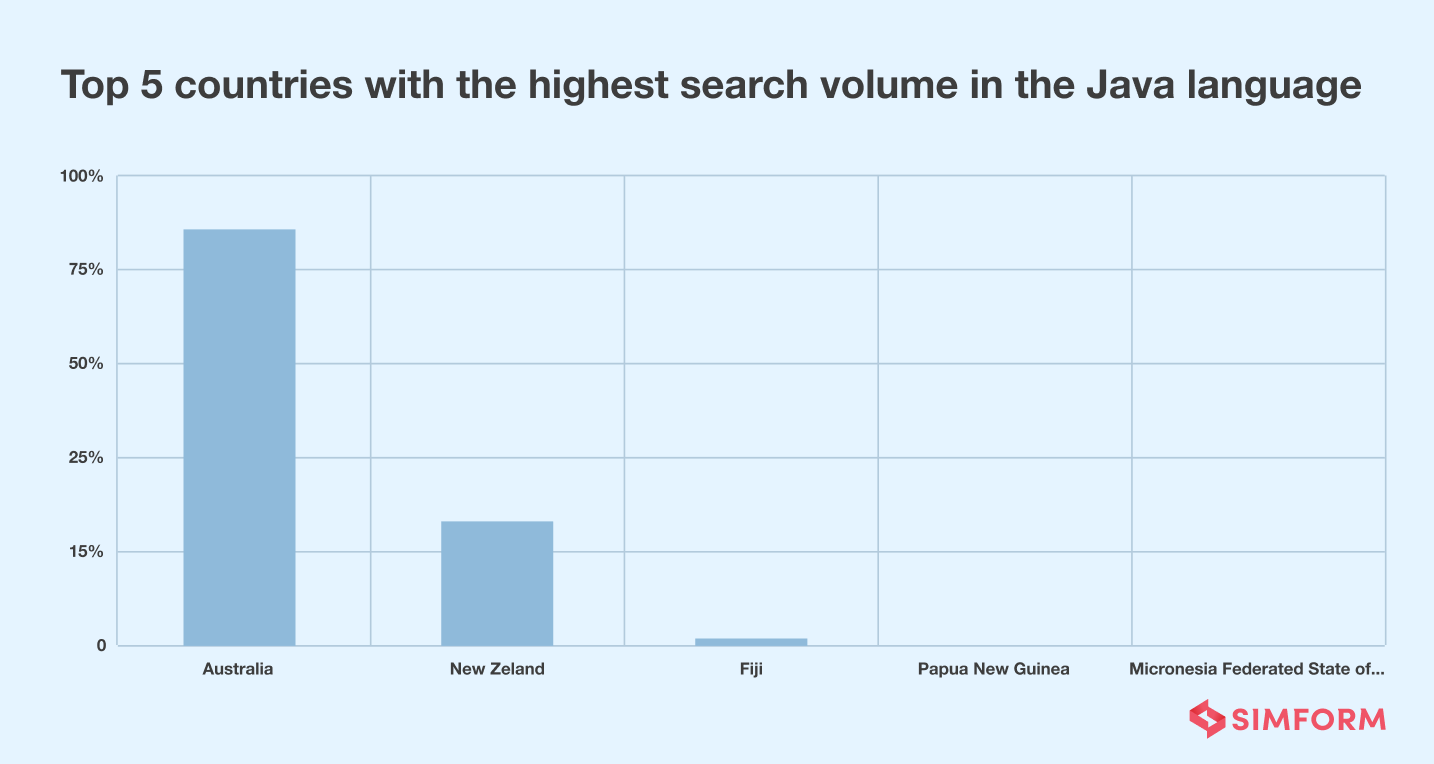
1. At 36%, Java and Python are the two most popular technologies in Australia as well.
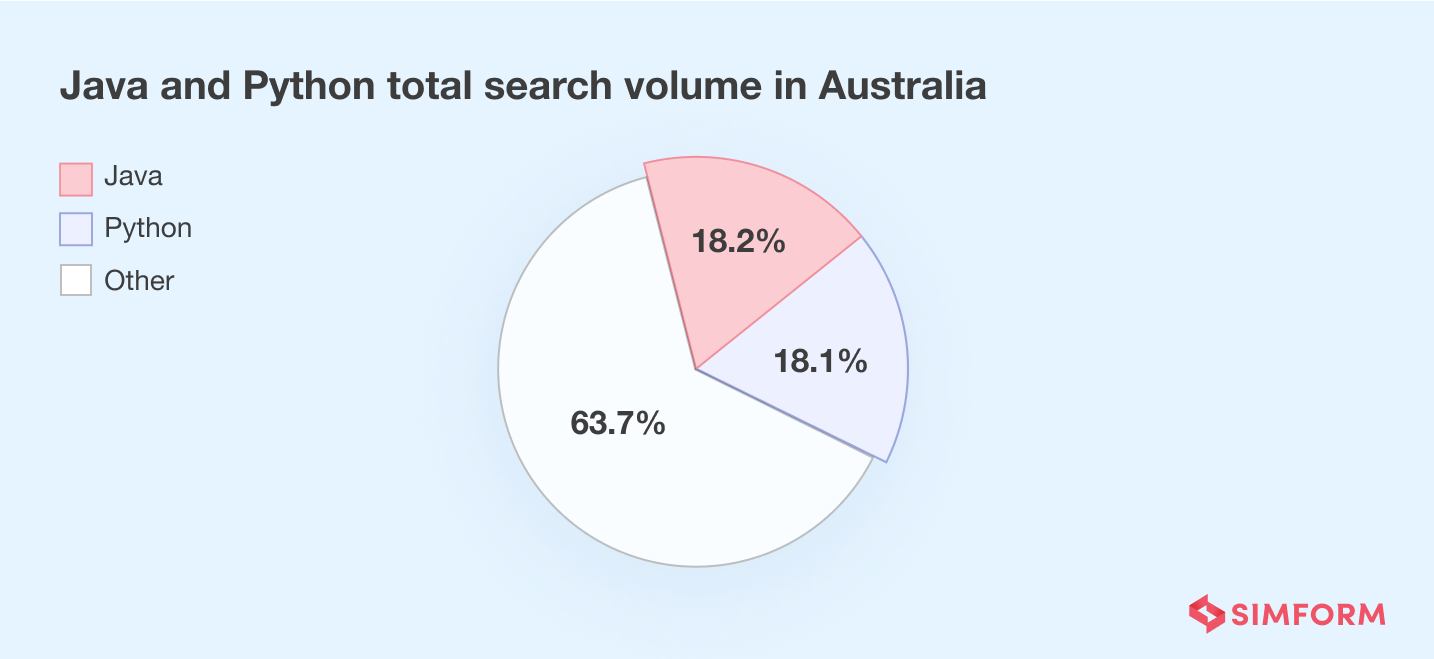
Python is also widely used by tech giants like IBM, Intel, NASA, Pixar, and Netflix.
Conclusion
After carefully analyzing the enormous data available, we have put forth this survey for our readers. However, this data is subject to change over time due to changes in technological trends and user preferences. Therefore, we recommend verifying the data with relevant sources when using it in the near future.
To conclude, we hope this data gives you the necessary insights into the popularity of technologies in 2024. If you have any questions, suggestions, or ideas about this survey, feel free to connect with us.
